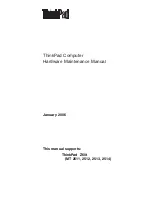
Description
With the introduction of 2.8 release, MikroTik RouterOS supports popular SBEI wanPCI-1T3 and
wanPCI-1T1E1 cards. These cards provide a router with the ability to communicate over T1, E1
and T3 links directly, without the need of external CSU/DSU equipment.
Property Description
chdlc-keepalive ( time ; default: 10s ) - specifies the keepalive interval for Cisco HDLC protocol
circuit-type ( e1 | e1-cas | e1-plain | e1-unframed | t1 | t1-unframed ; default: e1 ) - the circuit type
particular interface is connected to
clock-rate ( integer ; default: 64000 ) - internal clock rate in bps
clock-source ( internal | external ; default: external ) - specifies whether the card should rely on
supplied clock or generate its own
crc32 ( yes | no ; default: no ) - Specifies whether to use CRC32 error correction algorithm or not
frame-relay-dce ( yes | no ; default: no ) - specifies whether the device operates in Data
Communication Equipment mode. The value yes is suitable only for T1 models
frame-relay-lmi-type ( ansi | ccitt ; default: ansi ) - Frame Relay Line Management Interface
Protocol type
line-protocol ( cisco-hdlc | frame-relay | sync-ppp ; default: sync-ppp ) - encapsulated line protocol
long-cable ( yes | no ; default: no ) - specifies whether to use signal phase shift for very long links
mtu ( integer : 68 ..1500 ; default: 1500 ) - IP protocol Maximum Transmission Unit
name ( name ; default: sbeN ) - unique interface name.
scrambler ( yes | no ; default: no ) - when enabled, makes the card unintelligible to anyone without
a special receiver
General Information
Connecting two MT routers via T1 crossover
In the following example we will configure two routers to talk to each other via T1 link. The routers
are named R1 and R2 with the addresses of 10.10.10.1/24 and 10.10.10.2/24, respectively. Cisco
HDLC will be used as incapsulation protocol and circuit type will be regular T1.
First, we need to configure synchronous interfaces on both routers. Keep in mind, that one of the
interfaces needs to be set to use its internal clock.
•
On R1 router:
[admin@MikroTik] > /interface sbe set sbe1 line-protocol=cisco-hdlc \ \...
clock-source=internal circuit-type=t1 disabled=no [admin@R1] > /interface sbe print
Flags: X - disabled, R - running 0 R name="sbe1" mtu=1500 line-protocol=cisco-hdlc
clock-rate=64000 clock-source=internal crc32=no long-cable=no scrambler=no
circuit-type=t1 frame-relay-lmi-type=ansi frame-relay-dce=no chdlc-keepalive=10s
[admin@R1] >
•
On R2 router:
Page 242 of 695
Copyright 1999-2007, MikroTik. All rights reserved. Mikrotik, RouterOS and RouterBOARD are trademarks of Mikrotikls SIA.
Other trademarks and registred trademarks mentioned herein are properties of their respective owners.
















































